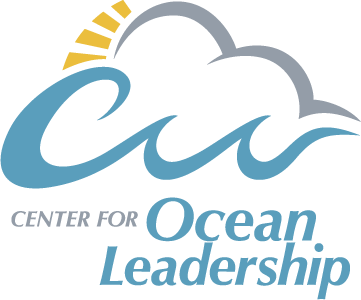Climate Change: Ocean Science and Solutions
Resources

Climate Change: Ocean Science and Solutions
One only needs to watch the news to know that millions of humans across the globe are already experiencing the impacts of climate change, which is increasing the frequency and severity of droughts, flooding, wildfires, hurricanes, and other events. The immediate impacts are clear: destruction of individual homes and entire communities, impaired access to healthcare, loss of life, and the financial cost of response and recovery. But there are also long-term impacts to consider, such as the changes in terrestrial, oceanic, and freshwater ecosystems that impact their resiliency or ability to recover after disruption from such events, threatening long-term impacts on ecological processes and services upon which humans rely.
The financial costs resulting from weather-related disasters continue to rise each year. The cost of weather-related disasters continues to rise each year because of changing climate. As of October 8, 2021, the U.S. alone has experienced 18 weather/climate disaster events that each resulted in losses exceeding $1 billion. These included droughts, flooding, wildfires, hurricanes, and winter storms.
Evidence for rapid climate change is compelling – and growing. Our planet’s average global temperature is rising. This change is directly linked to human activities that increase the amount of greenhouse gases (e.g., carbon dioxide and methane) in the atmosphere. Obviously, the ranking of years will continually change; however, according to the National Oceanic and Atmospheric Administration (NOAA), 2020 is the second-warmest year on record (knocking 2019 down to number three). Seven of the world’s warmest years have occurred since 2014; the 10 warmest years have occurred since 2005.
Changes are also occurring in the ocean. The basic chemistry of the ocean is changing faster now than ever in the past. As the ocean continues to absorb much of the excess carbon dioxide and heat in the atmosphere, the water warms, expands, and becomes more acidic and less oxygenated. These thermal and chemical changes put stress on marine ecosystems and the life which inhabit them. They also melt terrestrial ice sheets and glaciers, which, unlike their aquatic counterparts (ice shelves and sea ice), cause rising sea levels and put coastal communities at greater risk of erosion and storm surge. Simply put, the ocean, which covers more than 70 percent of Earth’s surface and transports heat from the equator to the poles, can’t continue to act as a huge buffering mechanism, regulating the global climate. Humans have introduced too much carbon dioxide into the system too quickly and we are now dealing with the consequences. Unfortunately, some consequences are still unknown as new and cumulating effects on our complex ocean and coastal ecosystems emerge.
It’s clear that climate change is one of the most complex issues we face. The United Nations’ Intergovernmental Panel on Climate Change (IPCC) has made that clear since their first climate assessment in 1990. They released their sixth report in August 2021, stating unequivocally that we must take urgent action to curb global heating if we are to prevent catastrophe. And while the IPCC assessment states that greenhouse gases from anthropogenic sources are driving extreme weather, the more than 200 scientists involved in writing the report believe nations can still prevent the worst impacts.
The ocean, while negatively affected by climate change, can also serve as a source of solutions. Nature-based solutions are often overlooked, but blue carbon ecosystems including saltmarshes, seagrass beds, and mangroves, serve as valuable habitats for sequestering and storing carbon, at a rate of two- to four-times that of terrestrial forests. Protecting and conserving blue carbon ecosystems dually serve to bolster coasts and shorelines world-wide. Ocean-based renewable energy, such as offshore wind, tidal, and current technologies, are viable clean energy options, helping curb carbon emissions. These two example options not only serve as science-based solutions, but also help inspire innovation, support workforce development, and boost the economy, all of which positively supports goals of sustainable development and marine stewardship.
As the urgency for action grows, it is crucial that our future leaders understand the understand the interconnected processes influencing Earth’s climate at global and regional scales, the impacts of climate change, and the opportunities and approaches to adaptation or mitigation. Researchers are constantly evaluating climate change’s role in extreme weather events, looking for trends and solutions. Investments in remote and in situ ocean observing and monitoring infrastructure are key to further understanding the ocean-climate system, predicting future negative impacts, and providing information that helps communities adapt and support development of new ocean-based solutions.
Topics To Explore
Webinar Series
View the NOSB’s climate change related Professional Development Webinar Series recordings to learn more.
2022 Professional Development Webinars: Dr. Sean Hayes
As climate change begins to have influences on the physical processes of the ocean there will be a variety of responses by most marine taxa. NOAA Fisheries is responsible for managing many if not most of these species in US waters. The presentation will highlight some general principles that can be expected, and then dive a little deeper into some case studies from several of NOAA’ Species in the Spotlight including seals, salmon, whales and more.
2022 Professional Development Webinars: Dr. Andrea Copping & Dorian Overhus
As we combat climate change, marine renewable energy (MRE) has the potential to play an important role. However, we need to understand the impact tidal, wave, and ocean thermal energy devices may have on marine animals and the environment in order to deploy MRE devices in a responsible manner. This webinar will cover the importance of MRE and how it relates to climate change, what is known about environmental interactions, and next steps for the industry.
More Places To Learn
10 New Insights in Climate Science 2021 (Future Earth)
Oceans of Climate Change (NASA JPL)
A Breathless Ocean (IUCN)
Collapse of the Oceans (National Geographic)
Renewable Energy 101 (National Geographic)
Health and Climate Benefits of Offshore Wind Farms (Harvard C-CHANGE)
IPCC Special Report on the Ocean and Cryosphere in a Changing Climate (Chapter 3: Polar regions) (2019)
Climate Change: Evidence and Causes: Update 2020 (NASEM)
Detecting the Coastal Climate Signal: The IOOS Contribution (IOOS Association)
Climate risk and response: Physical hazards and socioeconomic impacts (McKinsey Global Institute)
Ocean data need a sea change to help navigate the warming world (Brett et al. 2020)
Climate Change, Sustainable Development and Coastal Ocean Information Needs (Malone et al. 2010)
The deep ocean under climate change (Levin and Le Bris 2015)
Climate impacts on the ocean are making the Sustainable Development Goals a moving target travelling away from us (Singh et al. 2019)
Climate.gov: Science & information for a smart nation
Global Climate Change: Vital signs of the planet (NASA)
Teaching about climate change (Science Education Resource Center at Carleton College)
First Street Foundation’s tool for identifying local flood risk from climate change
Tethys Marine Renewable Energy Educational Resource page
EOS Environmental 2020 State of the Science Report
Ocean Energy Systems (OES) website

